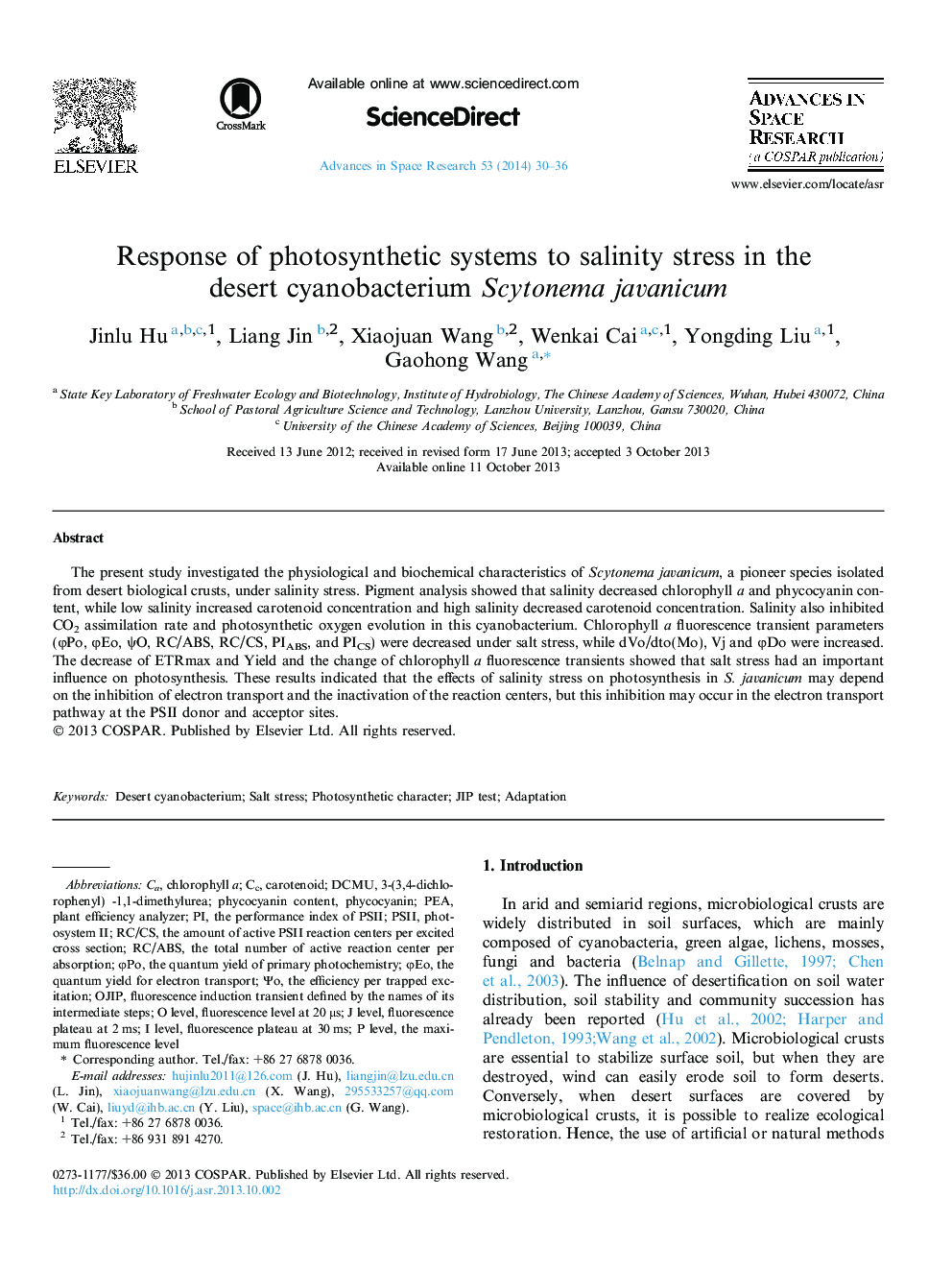| Article ID | Journal | Published Year | Pages | File Type |
|---|---|---|---|---|
| 1763982 | Advances in Space Research | 2014 | 7 Pages |
•Salinity decreased CO2 assimilation activity in Scytonema javanicum.•Salinity changed carotenoid, chlorophyll a and PC contents.•Salinity reduced the electron transport efficiency of photosynthesis.•Salinity reduced the amount of active PSII reaction centers.
The present study investigated the physiological and biochemical characteristics of Scytonema javanicum, a pioneer species isolated from desert biological crusts, under salinity stress. Pigment analysis showed that salinity decreased chlorophyll a and phycocyanin content, while low salinity increased carotenoid concentration and high salinity decreased carotenoid concentration. Salinity also inhibited CO2 assimilation rate and photosynthetic oxygen evolution in this cyanobacterium. Chlorophyll a fluorescence transient parameters (φPo, φEo, ψO, RC/ABS, RC/CS, PIABS, and PICS) were decreased under salt stress, while dVo/dto(Mo), Vj and φDo were increased. The decrease of ETRmax and Yield and the change of chlorophyll a fluorescence transients showed that salt stress had an important influence on photosynthesis. These results indicated that the effects of salinity stress on photosynthesis in S. javanicum may depend on the inhibition of electron transport and the inactivation of the reaction centers, but this inhibition may occur in the electron transport pathway at the PSII donor and acceptor sites.
